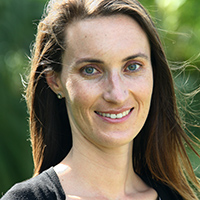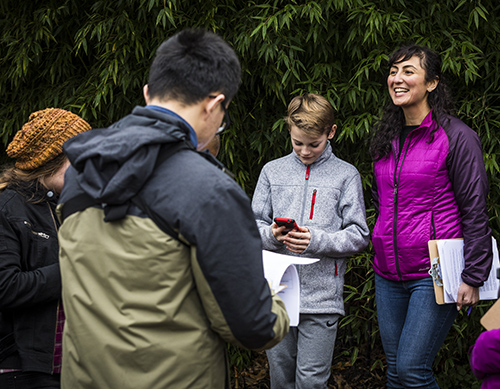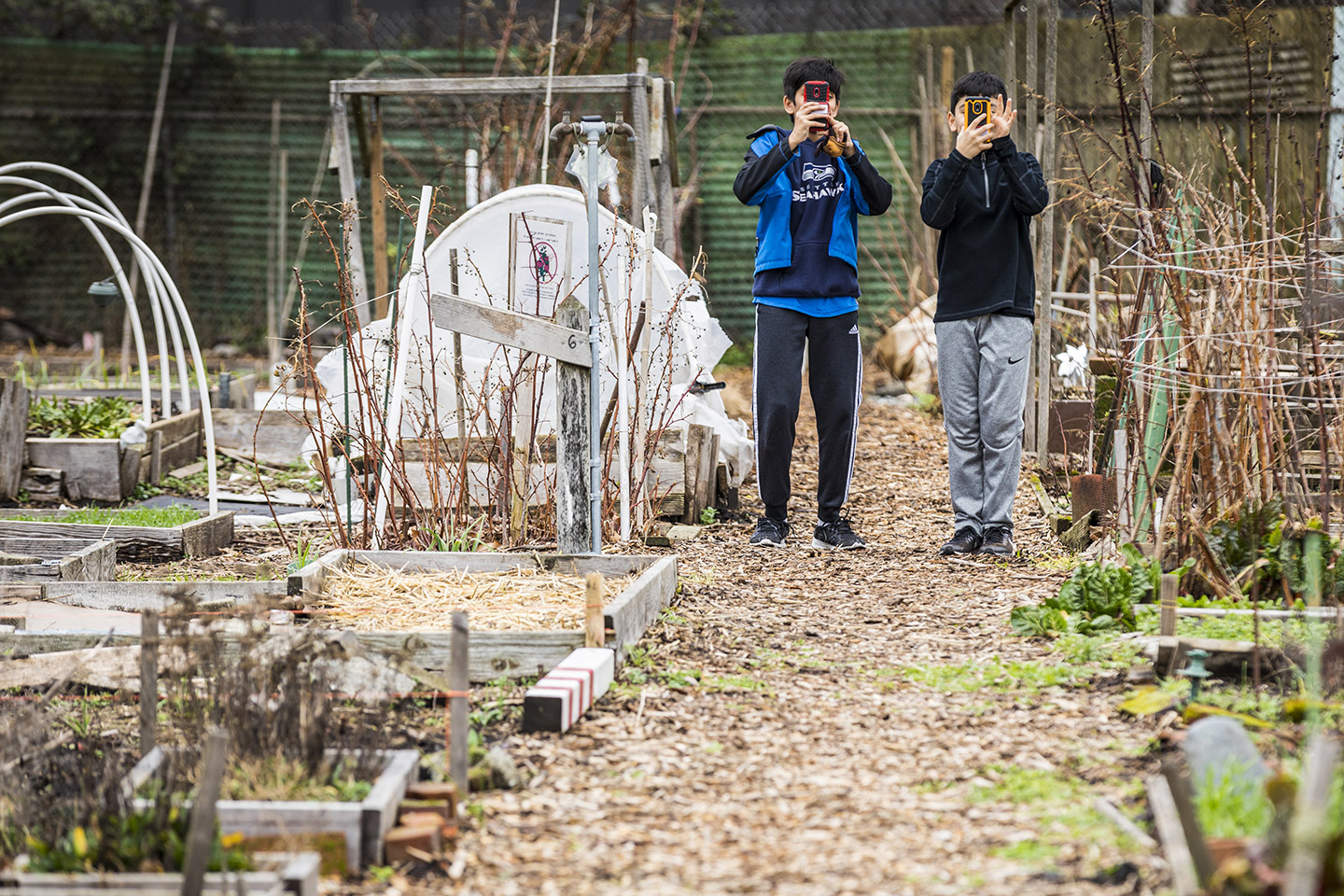
As Joshua Lawler studies how plants and animals respond to big changes in the environment, something on a more personal level weighs on him. People, particularly children, are spending less time outside.
If kids don’t make a connection with nature, the next generation won’t have as much interest in caring for nature. Smartphones and Xbox controllers have become attached to more and more children’s hands. Yet if we want them to become faithful stewards of the natural world, we’re going to need kids to look up from their screens.
Lawler, a professor in the University of Washington’s College of the Environment, went to a colleague with a counterintuitive idea: Maybe there could be an app for that.
He joined forces with Katie Davis, an associate professor at the UW Information School who focuses her research on how technology can support children’s learning and development, to see whether they could develop an app that would get kids to go outside and not just play with their electronic devices, but truly connect with nature. The result is NatureCollections, a smartphone app that has shown promise in early studies.

“It may seem like the exact wrong thing to do, to create an app to get them outside,” Lawler said. “But we realize the devices aren’t going anywhere and the connection to the screen isn’t going to disappear. So we can potentially use it to help get kids engaged in nature.”
The basic idea for the app is to provide a platform for children to build photo collections from things they see outdoors, and to provide a way to share those collections with their friends. It builds on children’s innate desire to collect things, be they Legos, dolls or Pokémon cards. The NatureCollections app asks users about their interests — such as insects, trees or birds — and then gives them challenges, like a scavenger hunt. Kids photograph things in nature and add a name, caption and location. Then they are rewarded with badges for their achievements.
In 2016, Lawler and Davis took their idea to the UW Innovation Awards, where they got an enthusiastic response. They won $400,000 in funding over two years to develop and test their app, then set about designing it. Knowing that kids could be the best judge of what would appeal to other kids, they went to KidsTeam UW, a research group at the Information School that brings together children in the target range for NatureCollections – 8 to 12 years old – and asks them to help design technology geared toward kids their own age.
“We had a good idea of what the basic app should be, but they helped us flesh out other features and what they found engaging and what they didn’t,” Davis said. “It clearly was important to have a compelling character guide them through the experience, and to have challenges and social components.”
After several months of development and usability tests, it was time to do some user testing and start to answer the researchers’ central question: Can a mobile app connect kids to nature?

Doctoral students Sarah Chase and Saba Kawas, both research assistants on the project, conducted the initial tests with 64 students from the University Prep school in Seattle during a soggy week last winter. They went to one of the city’s P-Patch community gardens and gave the kids smartphones – half equipped with the NatureCollections app and half with an app that looked identical but was really just a dummy camera. They wanted an unbiased look at whether NatureCollections would do what they hoped.
They and their UW student researchers watched as the kids first took a few minutes for a batch of selfies and then turned their attention to the app. As the researchers studied the students’ behavior, they noticed one major difference: While the kids using the simple camera rarely looked away from their screens, those using NatureCollections paid more attention to their surroundings than to their devices.
With NatureCollections, Chase said, “a lot of times they would put the phone down, scan their surroundings, and find the next object that they wanted to photograph. That behavior I did not expect to see, and it was really exciting for the potential of pointing their attention toward the natural world.”
Kawas noted that kids using NatureCollections rather than the camera app also showed a heightened awareness of their surroundings with their other senses.
“They paid attention to the sound of bird calls and looked up to find the birds,” she said. “Although they have the devices and they’re entering text, depending on what age they are, they are not exploring through their phone screens.”
The research team followed the initial field test with a three-week trial of the app over the summer with a different group of kids. That also showed promising results, but the researchers are cautious about drawing any conclusions yet. Their next steps are to continue studying and refining the app, and surveying their young test subjects to see whether their attitudes toward nature have changed in the long term.
The research team also recently won more funding, a $50,000 award from the UW Population Health Initiative and UW startup hub CoMotion to explore the app’s commercial potential. The app isn’t yet available to the public in Apple’s App Store or on Google Play, but with the right business plan, it could show up in 2019.
While Lawler would love to see the app reach a wide audience, it doesn’t have to go viral to make an impact on the big environmental issues he studies.
“If we can get just a couple hundred kids outside who haven’t been outside, and if they enjoy being out there in nature and have an appreciation for nature, that would be a success,” he said.
This story originally was published in Washington Trails magazine. Learn more about the app on the NatureCollections website.
